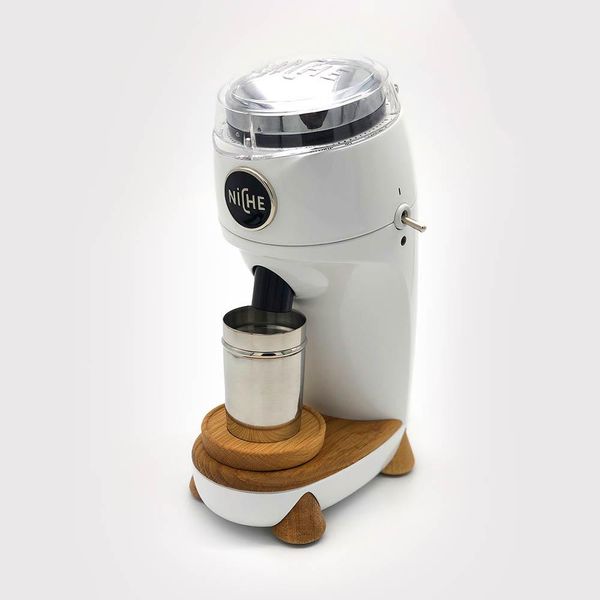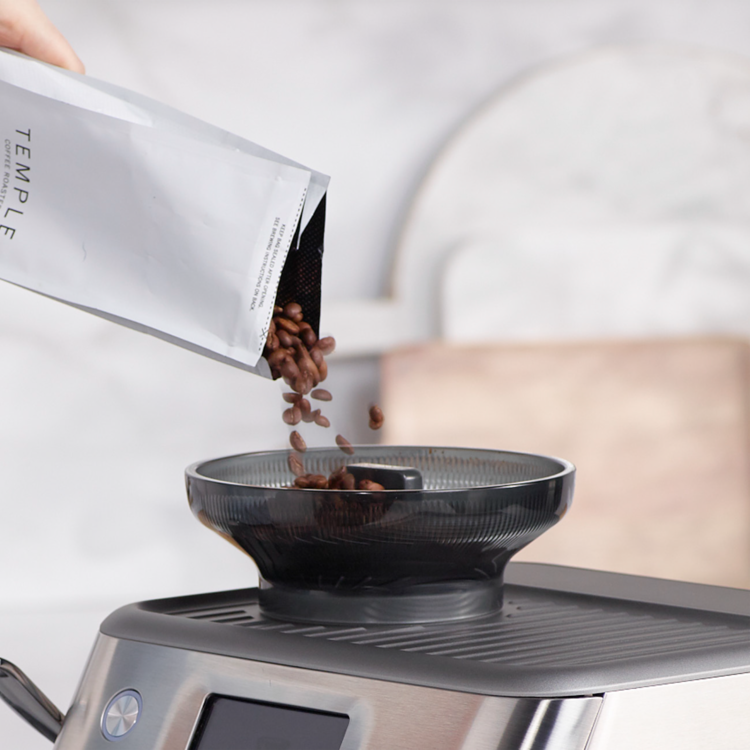Introduction to Coffee Grinding
The journey to a perfect cup of coffee begins with the grind. The process of transforming whole beans into grounds is not just a step in coffee preparation, it is an art in itself, demanding the right equipment and knowledge to produce the desired outcome. Whether you use an espresso grinder vs coffee grinder, the objective is the same: to unlock the full potential of your coffee beans.
In essence, grinding is the act of breaking down coffee beans to increase the surface area in contact with water during brewing. This process plays a crucial role in extracting the flavor, aroma, and essential oils that contribute to the richness of your coffee experience. The grind size, consistency, and method are pivotal in how your cup of coffee will taste. Each brewing method, from espresso to French press, calls for a unique grind size to achieve the ideal extraction.
A coffee grinder’s task is to deliver grounds that are suited for the intended brewing method. For espresso, a fine, consistent grind is key, while for other styles, such as drip or pour-over, a coarser grind may suffice. Using the correct grinder to match your coffee-making style ensures that the resulting brew is balanced, flavorful, and satisfying.
Investing in the proper coffee grinder can revolutionize your daily ritual and elevate your coffee enjoyment to new heights. As we continue to explore the espresso grinder versus coffee grinder dialogue, consider the importance of this step and choose your equipment wisely to cherish every sip of your coffee.

Key Differences Between Espresso and Coffee Grinders
When it comes to coffee grinders, not all are built the same, especially when distinguishing between those designed for espresso and general coffee grinding. Understanding these differences is crucial to achieving the perfect brew. Here are the key characteristics that set espresso grinders apart from standard coffee grinders:
- Grind Fineness: Espresso grinders produce a very fine grind critical for espresso brewing, where precision is vital for good extraction. Coffee grinders for other brew methods offer a wider range of grind sizes.
- Grind Consistency: Espresso requires a uniform grind to ensure even water distribution during extraction. Espresso grinders typically have higher precision burrs to provide this consistency, while coffee grinders may have a broader range of grind qualities.
- Adjustment Precision: The ability to make micro-adjustments is essential for dialing in espresso. Espresso grinders usually feature stepless or micro-stepped adjustments; other grinders may not offer as much fine-tuning capability.
- Speed and Heat: Espresso grinders often grind at a slower speed to prevent heat buildup, which can affect the coffee’s flavor. Coffee grinders for other methods may not emphasize speed control to the same extent.
- Price: Due to their specialized nature and the need for precise engineering, espresso grinders generally come with a higher price tag compared to standard coffee grinders that are sufficient for other brewing methods.
Choosing the right grinder involves considering your preferred brewing method and the level of control you want over your coffee’s final flavor profile. Whether you opt for an espresso grinder or a more versatile coffee grinder, align your choice with your coffee-making preferences and habits for the best results.
Understanding Burr Grinders
Burr grinders are key in coffee making. This type grinds beans between two burrs. One burr is static while the other moves. This process crushes and grinds coffee precisely. Unlike blade grinders, burr versions give you control over grind size. Better grind control means better coffee flavor.
How Burr Grinders Work
Burr grinders work by pressing beans between hard surfaces. The burrs can be flat or conical in shape. By adjusting the distance between the burrs, you control the grind size. Smaller distances make finer grinds, while larger gaps give coarser results. The beans feed into the burrs and break down into uniform pieces.
Benefits of Using Burr Grinders
Burr grinders offer benefits including consistent grind size and flavor extraction. They are preferred for precision and quality. Reduced heat buildup is another advantage. This preserves the coffee’s natural flavors. Burr grinders tend to have durable construction too. This is important for regular coffee drinkers.
Burr Grinder Types
Flat and conical are the two types of burr grinders. Flat burrs align parallel to ground evenly. Conical burrs are stacked and require less power. Both have unique qualities. Users should choose based on their coffee preferences and brewing methods.
Burr grinders are an investment in your coffee experience. They enhance the quality, taste, and enjoyment of each cup. Understanding how they work and their benefits helps you pick the right one.

The Role of Consistency in Espresso Preparation
Creating the perfect espresso relies heavily on the consistency of the grind. Consistent, fine grinds allow for even water distribution during extraction. This results in a balanced and rich shot. An espresso grinder is specifically designed for this purpose, offering precise settings. These settings help you achieve the same grind each time.
To prepare espresso, the coffee needs to be very fine, almost powdery. This allows for a high-pressure water flow. It extracts flavors and oils effectively, producing a thick, creamy crema on top. Inconsistent grinding leads to uneven extraction. That means, parts of the coffee may over-extract while others under-extract. The result? A less desirable cup.
For espresso lovers, this is why the grinder chosen is so important. Espresso grinders typically use flat or conical burrs. These provide a level of finesse needed for this method. Good espresso grinders allow for tiny, incremental adjustments. Small changes can have a big impact on the quality of the shot.
On the other hand, standard coffee grinders might not provide the same level of uniformity. They work fine for other brewing methods. But for espresso, they might lead to inconsistent shots. For your espresso ritual, ensuring consistent grind size is non-negotiable. It is just as crucial as the quality of the coffee bean itself.
In summary, for excellent espresso, consistency is king. Both in grind size and in the ability to reproduce it cup after cup. Selecting a dedicated espresso grinder is vital for this reason. It ensures that every espresso shot you pull is up to the mark.
How Grind Size Affects Your Brew
The size of your coffee grounds significantly impacts the final brew. A fine grind is essential for espresso because it slows the water, allowing for better extraction of flavors. Conversely, a coarse grind is preferred for methods like French press, where water and grounds steep together for a few minutes.
Understanding Extraction Rates
Extraction rate is tied to the size of the grind. Fine grounds have more surface area touching the water, leading to a quick extraction. This makes for a strong, rich espresso. Coarse grounds, with less surface contact, extract slower, resulting in a lighter taste.
Matching Grind to Brewing Method
The brewing method you choose dictates the grind you need. Espresso machines require a fine grind. Pour-over and drip coffee makers work best with medium grinds. French presses and cold brew methods need coarser grinds.
Adjusting for Taste
Taste is subjective. You may need to adjust the grind size to suit your preference. If your coffee is bitter, try a coarser grind. For weak coffee, go finer. Experiment until you find your perfect setting.
The Impact of Grind Uniformity
Uniformity in grind size matters too. Irregular grinds can cause over and under-extraction in the same brew. Burr grinders are the best option for consistent grind sizes.
Overall, knowing the right grind size and achieving it consistently are key to a satisfying coffee experience.

Selecting the Right Grinder for Your Brewing Method
Choosing the ideal grinder for your brewing method enhances your coffee experience. Here’s how to select the right grinder:
- Assess Your Brewing Preferences: Determine if you make espresso, French press, or other styles more often. Your preference will dictate the type of grinder you need.
- Espresso Enthusiasts: If espresso is your go-to, invest in a specialized espresso grinder for fine grinds and consistency.
- Versatility Seekers: Those who enjoy various brewing methods should opt for a coffee grinder with an adjustable grind range.
- Space and Usage: Consider the grinder’s size and how much you’ll use it. Make sure it fits your space and meets your brewing frequency.
- Budget: Keep in mind your budget, as espresso grinders can be pricier. Decide how much you are willing to invest.
By matching your grinder to your brewing method, you’ll achieve the best flavor profiles from your coffee beans. Whether for espresso or a casual morning cup, the right grinder makes a difference.
Maintenance and Durability Considerations
When selecting an espresso or coffee grinder, maintenance and durability are crucial factors to consider. Here’s what you need to keep in mind:
- Ease of Cleaning: Coffee grinders need regular cleaning to maintain performance. Look for grinders with parts that are easy to remove and clean.
- Material Quality: Grinders made with high-quality materials like stainless steel will last longer. They can handle frequent use better than those made with plastic.
- Burr Longevity: Burrs are the heart of the grinder. Choose a grinder with burrs known for their longevity. This will ensure consistent grind sizes over time.
- Manufacturer Support: Consider grinders from brands with good customer support. They should offer replacement parts and service options.
- Warranty Length: Longer warranties signal the manufacturer’s confidence in their product’s durability.
Investing in a grinder that is durable and easy to maintain will not only prolong its life but also ensure that your coffee tastes great every time. Carefully consider these factors to find a grinder that will serve you well for years to come.
Price Point and Value for Money
When contemplating the purchase of an espresso grinder versus a coffee grinder, price point and value for money are significant considerations. Here’s what you should consider when budgeting for a grinder:
- Assess Budget Alignment: Determine how much you’re willing to invest in a grinder that matches your coffee preferences and frequency of use.
- Compare Features and Prices: Look at the features offered by various grinders and compare them with their prices to find the best value for your needs.
- Consider Long-Term Costs: Cheaper grinders might save you money upfront, but consider long-term costs associated with maintenance, durability, and the need for potential upgrades.
- Espresso Grinder Investment: If espresso is your primary choice of brew, investing more in a high-quality espresso grinder may provide better value in the long run given the precision required for espresso preparation.
- Versatility Value: If you enjoy different brewing methods, a versatile coffee grinder with multiple settings might offer better value, giving you a range of options without the need for multiple devices.
- Quality Over Price: While budget is important, don’t compromise on quality. A reliable, well-built grinder can enhance your coffee experience and may prove to be a better investment over time.
Understanding the relationship between quality, features, and price will guide you to make an informed decision that aligns with your coffee brewing goals and budget.
